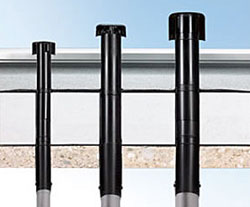
Categories
- Home
- Types Of Gas Ventilation
- Equipment Gas Ventilation
- Gas Appliances Ventilation
- Gas Boiler Ventilation
- Gas Heater Ventilation
- Gas Meter Ventilation Requirements
- Gas Pipe Ventilation
- Gas Range Downdraft Ventilation
- Gas Roof Ridge Ventilation
- Gas Stove Ventilation
- Gas Ventilation Grills
- Gas Ventilation Products
- Gas Ventilation Units
- Heating System Gas Ventilation
- Marine Oil And Gas Ventilation
- Mechanical Gas Ventilation Systems
- Mobile Home Gas Ventilation
- Natural Gas Ventilation
- Roof Ventilation
- Soil Gas Ventilation
- Type B Gas Ventilation
- Underfloor Gas Ventilation
- Gas Ventilation Explained
- Gas Ventilation Suppliers
Soil Gas Ventilation
Keeping your home safe of external materials can be difficult at times, especially if you don’t have a well-maintained ventilation system. There are numerous types of gases that could pose a threat to your family’s health if they are not ventilated properly. Furthermore, you are probably familiar with gas and air ventilation; well, there is an additional type of system known as soil gas ventilation. This system has been developed to get rid of all the air space that is found in soil, which can contain hazardous gases like radon and methane. Certainly, in order to get rid of these gases you must installsoil gas ventilation in your home.
Residential Ventilation Systems
Even though gas ventilation is very common in the United States, there are people who don’t comprehend the difference among the several ventilation systems designed for homes. Those who live in areas where the temperature drops during the winter tend to have complete gas heaters ventilation, in order to get rid of the large amounts of steam and condensation. Moreover, those who live in hot areas may also be in need of gas ventilation pipes and vents in order to keep their homes cool. In general, soil gas ventilation systems is designed just like any other type of residential ventilation system, which is made to help the air circulate properly in order to avoid the accumulation of gases that could turn poisonous if it was done otherwise.
The Extreme Importance of Soil Gas Ventilation
In general terms, soil gas is aninvisible threat because it’s the air that circulates within a closed room, where it carries any particle of soil or vapor that it has picked up along the way. This may sound harmless, but large amounts of soil gas can become hazardous to a person’s health, especially because it cannot be seen. In order to prevent the accumulation of such, you must coordinate the installation of a reliable soil gas ventilation system, which will help the air move properly. Furthermore, soil gas doesn’t only carry soil particles, but can also carry the following materials:
- Methane (flammable)
- Radon
- Termite Spray
- Water vapor
- Poison
- Herbicides
- Chlorinated hydrocarbons
- Benzenes
DIY or Hire a Contractor
Installing a complete soil gas ventilation system can be a tad tricky, especially because soil particles can travel easily through holes. In order to effectively create a ventilation path, you will have to install a granular drainage pad, which will form a very critical part of the entire soil gas ventilation system. Surely, you will have to install proper vents and pipes that will have an exhaust vent in the roof. Nevertheless, since soil gas could pose a threat to you and your family, it’s highly recommended by the Environmental Protection Agency (EPA) that you hire a licensed contractor to perform the installation for you. Even though soil gas doesn’t have to be disposed carefully like asbestos, it still requires a certain level of expertise for correct installation.In addition, the EPA has released a complete guide on how to build a home that is resistant to radon.
